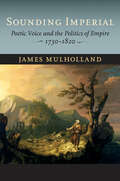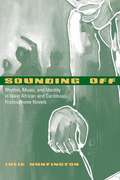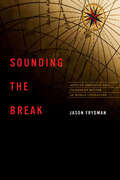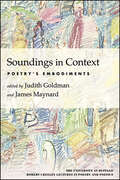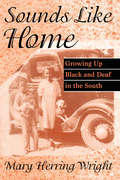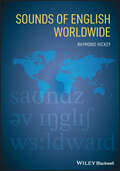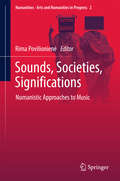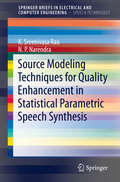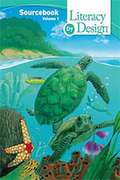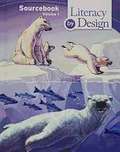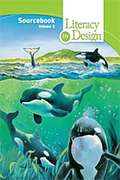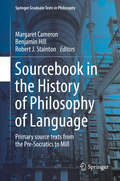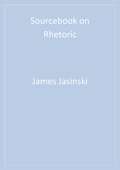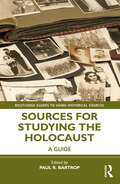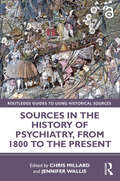- Table View
- List View
Sounding Imperial: Poetic Voice and the Politics of Empire, 1730–1820
by James MulhollandSpoken words come alive in written verse.In Sounding Imperial, James Mulholland offers a new assessment of the origins, evolution, and importance of poetic voice in the eighteenth and early nineteenth centuries. By examining a series of literary experiments in which authors imitated oral voices and impersonated foreign speakers, Mulholland uncovers an innovative global aesthetics of poetic voice that arose as authors invented new ways of crafting textual voices and appealing to readers. As poets drew on cultural forms from around Great Britain and across the globe, impersonating "primitive" speakers and reviving ancient oral performances (or fictionalizing them in verse), they invigorated English poetry.Mulholland situates these experiments with oral voices and foreign speakers within the wider context of British nationalism at home and colonial expansion overseas. Sounding Imperial traces this global aesthetic by reading texts from canonical authors like Thomas Gray, James Macpherson, and Felicia Hemans together with lesser-known writers, like Welsh antiquarians, Anglo-Indian poets of colonialism, and impersonators of Pacific islanders. The frenetic borrowing, movement, and adaptation of verse of this time offers a powerful analytic by which scholars can understand anew poetry’s role in the formation of national culture and the exercise of colonial power. Sounding Imperial offers a more nuanced sense of poetry’s unseen role in larger historical processes, emphasizing not just appropriation or collusion but the murky middle range in which most British authors operated during their colonial encounters and the voices that they used to make those cross-cultural encounters seem vivid and alive.
Sounding Off: Rhythm, Music, and Identity in West African and Caribbean Francophone Novels
by Julie HuntingtonIntrigued by "texted" sonorities—the rhythms, musics, ordinary noises, and sounds of language in narratives—Julie Huntington examines the soundscapes in contemporary Francophone novels such as Ousmane Sembene's God's Bits of Wood (Senegal), and Patrick Chamoiseau's Solibo Magnificent (Martinique). Through an ethnomusicological perspective, Huntington argues in Sounding Off that the range of sounds —footsteps, heartbeats, drumbeats—represented in West African and Caribbean works provides a rhythmic polyphony that creates spaces for configuring social and cultural identities. Huntington’s analysis shows how these writers and others challenge the aesthetic and political conventions that privilege written texts over orality and invite readers-listeners to participate in critical dialogues—to sound off, as it were, in local and global communities.
Sounding the Break: African American and Caribbean Routes of World Literature (New World Studies)
by Jason FrydmanThe idea of "world literature" has served as a crucial though underappreciated interlocutor for African diasporic writers, informing their involvement in processes of circulation, translation, and revision that have been identified as the hallmarks of the contemporary era of world literature. Yet in spite of their participation in world systems before and after European hegemony, Africa and the African diaspora have been excluded from the networks and archives of world literature. In Sounding the Break, Jason Frydman attempts to redress this exclusion by drawing on historiography, ethnography, and archival sources to show how writers such as W. E. B. Du Bois, Zora Neale Hurston, Alejo Carpentier, Derek Walcott, Maryse Condé, and Toni Morrison have complicated both Eurocentric and Afrocentric categories of literary and cultural production. Through their engagement with and revision of the European world literature discourse, he contends, these writers conjure a deep history of "literary traffic" whose expressions are always already cosmopolitan, embedded in the long histories of cultural and economic exchange between Africa, Asia, and Europe. It is precisely the New World American location of these writers, Frydman concludes, that makes possible this revisionary perspective on the idea of (Old) World literature.
Soundings in Context: Poetry's Embodiments (The University at Buffalo Robert Creeley Lectures in Poetry and Poetics)
by James Maynard Judith GoldmanSoundings in Context brings together the second and third University at Buffalo Robert Creeley Lectures in Poetry and Poetics by the renowned literary and textual scholar Jerome McGann, and the innovative, prolific Canadian poet, essayist, and novelist Lisa Robertson, respectively. The volume's first half presents McGann's "Reading (I Mean Articulating) Poetry, a Multi-Player Game," with responses by Nikolaus Wasmoen and Steve McCaffery; the second presents Lisa Robertson's "Dous Chantar: Refrain for a Nightingale," with responses by Shannon Maguire and Liz Howard. Initially given at different moments and since revised, the pieces considered in the lectures range widely, moving from the Romantics and medieval troubadour poetry to T. S. Eliot, Jackson Mac Low, Jacques Rouboud, and far beyond. Still, they are collectively concerned with questions of voice, recitation, and reception in different contexts; with sonic patterning and its modes of significance; and with foregrounding an embodied experience of oral and written language as opposed to its interpretation. McGann, Robertson, and their interlocutors all propose affective, pragmatic approaches to poetry that allow it to surface as materially formative, alive and lived. Reading their contributions together offers an opportunity to see how these values present themselves in differing cultures of poetic scenography across space and time.
Soundings in Critical Theory
by Dominick Lacapra"Dominick LaCapra is unequalled in his ability to bring theoretical concerns that are associated with literary theory to the attention of historians. He is responsible for enlivening the discipline of history and compelling historians to rethink their foundational assumptions, which normally go unquestioned."—Mark Poster, University of California, Irvine
Sounds & Furies: The Love-Hate Relationship between Women and Slang
by Jonathon Green'When it comes to distaff dirtiness, mainstream males such as Dickens and Dekker make easy pickings, but Green finds the greatest treasures when he mudlarks on the margins. In Sounds & Furies, he has dredged up some gems.'Emma Byrne, Spectator'From fishwives to flappers and from music hall performers to Mumsnetters, women have indeed made contributions to the slang vocabulary of English; by bringing together so much fascinating material about their words and their worlds, this book makes its own contribution to the history of both women and language.'Professor Deborah Cameron, Professor of Language and Communication, Worcester College, University of Oxford'Green comprehensively disproves that slang is inherently masculine. Mumsnetters and bulldaggers, flappers and slappers, shicksters and hash-slingers all put in their claims as slang-users in their own right in this entertaining and thought-provoking book. Any writer venturing into the contentious area of women as users, creators or objects of slang from now on will look to Green for guidance or for arguments.'Julie Coleman, author of The Life of SlangSlang. The ultimate in man-made languages. The male gaze made verbal. A world where words for intercourse mean 'man hits woman', the penis is a gun, a knife or club and the vagina a terrifying tunnel. Possibly with teeth. Two thousand words for woman and every one a put-down. Even 'mother' is simply short for the grossest of obscenities.Thus the story, now and for several hundred years. But stories are just that and perhaps there's an alternative.In this book Jonathon Green, the leading collector of English-language slang and drawing on forty years of research in the field, asks whether women have another role to play. As slang's active, positive, rebellious subject, rather than its endlessly derided, submissive object.Sounds & Furies represents a quest to overturn a long-established, but far from invulnerable belief system. To show that throughout a recorded history that starts with Chaucer's bawdy, mouthy and magnificently self-willed Wife of Bath and carries on through a cast of working girls and villainesses, playwrights and bestselling authors, shop-girls and fish-wives and through to the modern, on-line worlds of Mumsnet and Tinder, women have always made slang their own.If slang has always been the language of the margins, then women, for all their numbers, have also been consigned to the margins. Those days, it is ever more clear, are over. If slang has a role then it is to represent us at our most human. That may not mean 'admirable' but it surely means 'true'. And humanity is on offer to everyone, whatever gender they may claim. That goes for language, whatever its variety, too.From the foreword by sex historian Kate Lister:'Patriarchal cultures have understood women, controlled women, and marginalised women. But, this book also reveals that it is the rebellious women who used slang: the fishwives, the scolds, the whores, and the harridans. Long may they continue to do so.'
Sounds Fascinating
by Wells J. C. Lhinton Davidson J. C. Davidson LhintonHow do you pronounce biopic, synod, and Breughel? - and why? Do our cake and archaic sound the same? Where does the stress go in stalagmite? What's odd about the word epergne? Pontcysyllte is obviously Welsh, but Penge is Welsh too! How cool is Caol in the Highlands of Scotland? What can Wesley's hymns tell us about sound change in English? How do people pronounce Wrocław in Poland? How can anyone manage to say Gdynia as just two syllables? Why is the village of Frith in the island of Montserrat usually pronounced as if spelt Frits? What embarrassing faux pas in English did a Russian conglomerate make? Should I bild a cubbard instead of building a cupboard? How should we capitalize an exclamation mark, and why might we need to? What's a depressor consonant? As a finale, the author writes a letter to his 16-year-old self.
Sounds Interesting
by J. C. Wells Lhinton DavidsonHow do you pronounce omega, tortoise and sloth? And why? Do charted and chartered sound the same? How do people pronounce the names Charon, Punjab, and Sexwale? In this engaging book, John Wells, a world-renowned phonetician and phonologist, explores these questions and others. Each chapter consists of carefully selected entries from Wells' acclaimed phonetics blog, on which he regularly posted on a range of current and widely researched topics such as pronunciation, teaching, intonation, spelling, and accents. Based on sound scholarship and full of fascinating facts about the pronunciation of Welsh, Swedish, Czech, Zulu, Icelandic and other languages, this book will appeal to scholars and students in phonetics and phonology, as well as general readers wanting to know more about language. Anyone interested in why a poster in Antigua invited cruise ship visitors to enjoy a game of porker, or what hymns can tell us about pronunciation, should read this book.
Sounds Like Home: Growing Up Black and Deaf in the South
by Mary Herring WrightMary Herring Wright's memoir adds an important dimension to the current literature in that it is a story by and about an African American deaf child. The author recounts her experiences growing up as a deaf person in Iron Mine, North Carolina, from the 1920s through the 1940s. Her story is unique and historically significant because it provides valuable descriptive information about the faculty and staff of the North Carolina school for Black deaf and blind students from the perspective of a student as well as a student teacher. In addition, this engrossing narrative contains details about the curriculum, which included a week-long Black History celebration where students learned about important Blacks such as Madame Walker, Paul Laurence Dunbar, and George Washington Carver. It also describes the physical facilities as well as the changes in those facilities over the years. In addition, Sounds Like Home occurs over a period of time that covers two major events in American history, the Depression and World War II. Wright's account is one of enduring faith, perseverance, and optimism. Her keen observations will serve as a source of inspiration for others who are challenged in their own ways by life's obstacles.
Sounds of English Worldwide
by Raymond HickeyAn in-depth exploration of the sound systems of varieties of English around the world, written by a renowned authority in the field In Sounds of English Worldwide, Raymond Hickey delivers a rigorous overview of the sound systems of varieties of English throughout the world. Beginning with an overview of the history and contexts of global varieties of English, this book guides readers through the spread of English during the colonial era leading up to the present day. The second section of the book broadly considers developments in the English-speaking world, accounting for the factors that triggered regional changes and resulted in diverse scenarios for English, including language contact and shift, new dialect formation , and the use of English in non-anglophone contexts. To assist students in learning how to approach the study of varieties of English, this valuable text addresses research questions of general interest to linguists and explores a variety of fieldwork methods commonly used by researchers in the area. This useful book offers: A thorough introduction to English today, including its geographical and social distribution, focusing on variation and change around the world Practical discussions of key changes in late modern English that determined the unique phonetic profile of different varieties of the language In-depth examination of present-day scenarios and how they might pan out in the future development of English, considering the many factors which may shape global forms of the language Includes useful summaries of varieties of English with a glossary and timeline, providing a quick reference of the key features of English around the world for students Considers research issues and methods to aid students in applying the material of the book to their own studiesPerfect for graduate students, advanced undergraduate students, and researchers studying varieties of Englishes, Sounds of English Worldwide will earn a place in the libraries of linguists and students studying Englishes worldwide from a sociolinguistic perspective as well as langague contact , bilingualism, the rise of new varieties along with English phonetics and phonology more generally.
Sounds, Societies, Significations
by Rima PovilionienėThis edited book covers many topics in musicological literature, gathering various approaches to music studies that encapsulate the vivid relation music has to society. It focusses on repertoires and geographical areas that have not previously been well frequented in musicology. As readers will see, music has many roles to play in society. Music can be a generator of social phenomena, or a result of them; it can enhance or activate social actions, or simply co-habit with them. Above all, music has a stable position within society, in that it actively participates in it. Music can either describe or prescribe social aspects; musicians may have a certain position/role in society (e. g. , the "popstar" as fashion leader, spokesman for political issues, etc. ). Depending on the type of society, music may have a certain "meaning" or "function" (music does not mean the same thing everywhere in the world). Lastly, music can define a society, and it is not uncommon for it to best define a particular historical moment. Case-studies in this work provide visibility for musical cultures that are rarely exposed in the dominant musicological discourse. Several contributions combine musicological analysis with "insider-musician" points of view. Some essays in the collection address the cultural clash between certain types of music/musicians and the respective institutional counterparts, while certain contributing authors draw on experimental research findings. Throughout this book we see how musics are socially significant, and - at the same time - that societies are musically significant too. Thus the book will appeal to musicologists, cultural scholars and semioticians, amongst others.
Source Modeling Techniques for Quality Enhancement in Statistical Parametric Speech Synthesis (SpringerBriefs in Speech Technology)
by K. Sreenivasa Rao N. P. NarendraThis book presents a statistical parametric speech synthesis (SPSS) framework for developing a speech synthesis system where the desired speech is generated from the parameters of vocal tract and excitation source. Throughout the book, the authors discuss novel source modeling techniques to enhance the naturalness and overall intelligibility of the SPSS system. This book provides several important methods and models for generating the excitation source parameters for enhancing the overall quality of synthesized speech. The contents of the book are useful for both researchers and system developers. For researchers, the book is useful for knowing the current state-of-the-art excitation source models for SPSS and further refining the source models to incorporate the realistic semantics present in the text. For system developers, the book is useful to integrate the sophisticated excitation source models mentioned to the latest models of mobile/smart phones.
Sourcebook (Rigby Literacy by Design #Volume 1, Grade 3)
by Linda Hoyt Michael Opitz Sharon Hill Robert Marzano Yvonne Freeman David FreemanNIMAC-sourced textbook
Sourcebook (Rigby Literacy by Design #Volume 1, Grade 5)
by Linda Hoyt Michael Opitz Sharon Hill Robert Marzano Yvonne Freeman David FreemanNIMAC-sourced textbook
Sourcebook Volume 1 [Grade 4]
by Linda Hoyt Michael Opitz Sharon Hill Robert Marzano Yvonne Freeman David FreemanNIMAC-sourced textbook
Sourcebook Volume 2 [Grade 3]
by Linda Hoyt Michael Opitz Sharon Hill Robert Marzano Yvonne Freeman David FreemanNIMAC-sourced textbook
Sourcebook Volume 2 [Grade 5]
by Linda Hoyt Michael Opitz Sharon Hill Robert Marzano Yvonne Freeman David FreemanNIMAC-sourced textbook
Sourcebook for Political Communication Research: Methods, Measures, and Analytical Techniques (Routledge Communication Series)
by R. Lance Holbert Erik P. BucyThe Sourcebook for Political Communication Research will offer scholars, students, researchers, and other interested readers a comprehensive source for state-of-the-art/field research methods, measures, and analytical techniques in the field of political communication. The need for this Sourcebook stems from recent innovations in political communication involving the use of advanced statistical techniques, innovative conceptual frameworks, the rise of digital media as both a means by which to disseminate and study political communication, and methods recently adapted from other disciplines, particularly psychology, sociology, and neuroscience. Chapters will have a social-scientific orientation and will explain new methodologies and measures applicable to questions regarding media, politics, and civic life. The Sourcebook covers the major analytical techniques used in political communication research, including surveys (both original data collections and secondary analyses), experiments, content analysis, discourse analysis (focus groups and textual analysis), network and deliberation analysis, comparative study designs, statistical analysis, and measurement issues.
Sourcebook in the History of Philosophy of Language
by Robert J. Stainton Benjamin Hill Margaret CameronFor the first time in English, this anthology offers a comprehensive selection of primary sources in the history of philosophy of language. Beginning with a detailed introduction contextualizing the subject, the editors draw out recurring themes, including the origin of language, the role of nature and convention in fixing form and meaning, language acquisition, ideal languages, varieties of meanings, language as a tool, and the nexus of language and thought, linking them to representative texts. The handbook moves on to offer seminal contributions from philosophers ranging from the pre-Socratics up to John Stuart Mill, preceding each major historical section with its own introductory assessment. With all of the most relevant primary texts on the philosophy of language included, covering well over two millennia, this judicious, and generous, selection of source material will be an indispensable research tool for historians of philosophy, as well as for philosophers of language, in the twenty-first century. A vital tool for researchers and contemporary philosophers, it will be a touchstone for much further research, with coverage of a long and varied tradition that will benefit today's scholars and enhance their awareness of earlier contributions to the field.
Sourcebook on Rhetoric
by Dr James L. JasinskiThis book is designed to introduce readers to the language of contemporary rhetorical studies. The book format is an alphabetized glossary (with appropriate cross listings) of key terms and concepts in contemporary rhetorical studies. An introductory chapter outlines the definitional ambiguities of the central concept of rhetoric itself. The primary emphasis is on the contemporary tradition of rhetorical studies as it has emerged in the discipline of speech communication. Each entry in the glossary ranges in length from a few paragraphs to a short essay of a few pages. Where appropriate, examples are provided to further illustrate the term or concept. Each entry will be accompanied by a list of references and additional readings to direct the reader to other materials of possible interest.
Sources and Methods in Indigenous Studies (Routledge Guides to Using Historical Sources)
by RoutledgeSources and Methods in Indigenous Studies is a synthesis of changes and innovations in methodologies in Indigenous Studies, focusing on sources over a broad chronological and geographical range. Written by a group of highly respected Indigenous Studies scholars from across an array of disciplines, this collection offers insight into the methodological approaches contributors take to research, and how these methods have developed in recent years. The book has a two-part structure that looks, firstly, at the theoretical and disciplinary movement of Indigenous Studies within history, literature, anthropology, and the social sciences. Chapters in this section reveal that, while engaging with other disciplines, Indigenous Studies has forged its own intellectual path by borrowing and innovating from other fields. In part two, the book examines the many different areas with which sources for indigenous history have been engaged, including the importance of family, gender, feminism, and sexuality, as well as various elements of expressive culture such as material culture, literature, and museums. Together, the chapters offer readers an overview of the dynamic state of the field in Indigenous Studies. This book shines a spotlight on the ways in which scholarship is transforming Indigenous Studies in methodologically innovative and exciting ways, and will be essential reading for students and scholars in the field.
Sources and Methods in the History of Sexuality (Routledge Guides to Using Historical Sources)
by Anna Clark Elizabeth W. WilliamsSources and Methods in the History of Sexuality outlines some of the challenges of retracing sexual acts, identities, and desires in the past, and shows how historians have responded to these methodological challenges with ingenuity and creativity.The volume acknowledges that the history of sexuality poses particularly interesting challenges in relation to sources due the peculiar nature of sexuality. On one hand, sexuality is frequently hidden and private, its practices often unknown, denied, and evaded, its desires fleeting or obsessive, its reality confused or illuminated by fantasy; yet on the other, sexuality consistently breaks into the public sphere through moral panics, waves of persecution, taxonomizing projects, and medical/juridical interventions. With vivid case studies from renowned contributors, the chapters provide different theoretical approaches along with more practical examples of how to study the history of sexuality. The volume has a broad chronology from the ancient world to the present, an extensive geography covering not only Europe and the Americas but also Latin America and Africa, and also includes a variety of gender and sexual expressions. The book also privileges texts that offer an intersectional approach, asking how sex and sexualities were constructed alongside/against other categories of difference.With accessible writing, this volume encourages the reader to think creatively about how to find evidence of sex/sexuality in the past and will be of value to students as well as scholars interested in the history of sexuality.
Sources for Studying the Holocaust: A Guide (Routledge Guides to Using Historical Sources)
by Paul R. BartropSources for Studying the Holocaust provides a pathway for readers to engage with questions about what sources can be used to study the Holocaust. For many historians, the challenge has been how to rescue the story from oblivion when oft-used sources for other periods of history introduce even more issues around authenticity and reliability. What can be learned of what transpired in villages and towns numbering several thousand people, when all its Jewish inhabitants were totally obliterated through Nazi action? Who can furnish eyewitness testimony, if all the eyewitnesses were killed? How does one examine written records preserving knowledge of facts or events, where none were kept or survived the onslaught? And what weight do we put upon such resources which did manage to endure the destruction wrought by the Holocaust? Each chapter looks at one of a diverse range of source materials from which scholars have rescued the history, including survivor testimony, diaries, letters, newspaper accounts, photographs, trial documents, artefacts, digital resources, memorials, films, literature, and art. Each chapter shows how different types of records can be utilised as accurate sources for the writing of Holocaust history. Collectively, they highlight the ways in which all material, even the most fragmentary, can be employed to recreate a reliable record of what happened during the Holocaust and show how all sources considered can be employed to find meaning and understanding by exploring a range of sources deeply. This book is a unique analysis of the types of sources that can be used to access the history of Holocaust. It will be of invaluable interest to readers, students, and researchers of the Holocaust.
Sources in the History of Psychiatry, from 1800 to the Present (Routledge Guides to Using Historical Sources)
by Chris MillardThis book offers a general introduction to historical sources in the history of psychiatry, delving into the range of sources that can be used to investigate this dynamic and exciting field. The chapters in this volume deal with physical sources that might be encountered in the archive, such as asylum casebooks, artwork, material artefacts, post-mortem records, more general types of source including medical journals, literature, public enquiries, and key themes within the field such as feminist sources, activist and survivor sources. Offering practical advice and examples for the novice, as well as insightful suggestions for the experienced scholar, the authors provide worked-through examples of how various source types can be used and exploited and reflect productively on the limits and constraints of different kinds of source material. In so doing it presents readers with a comprehensive guide on how to ‘read’ such sources to research and write the history of psychiatry. Methodically rigorous, clear and accessible, this is a vital reference for students just starting out within the field through to more experienced scholars experimenting with new and unfamiliar sources in the history of medicine and history of psychiatry more specifically.
South Africa (Reading Essentials in Social Studies: Country Connections)
by Joanne MatternDiscover South Africa, a country with four distinct ethnic groups that are finally coming together after years of segregation.
